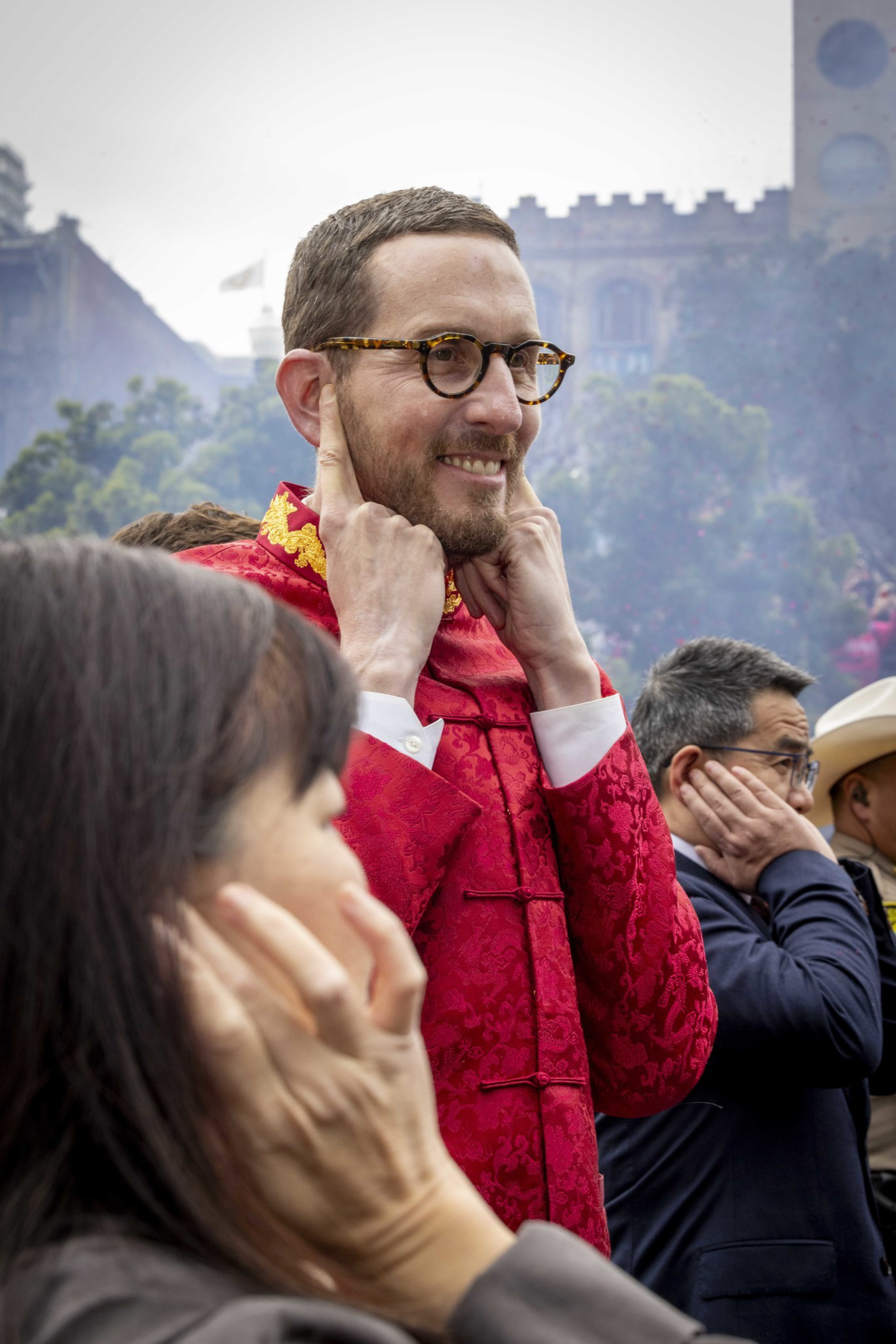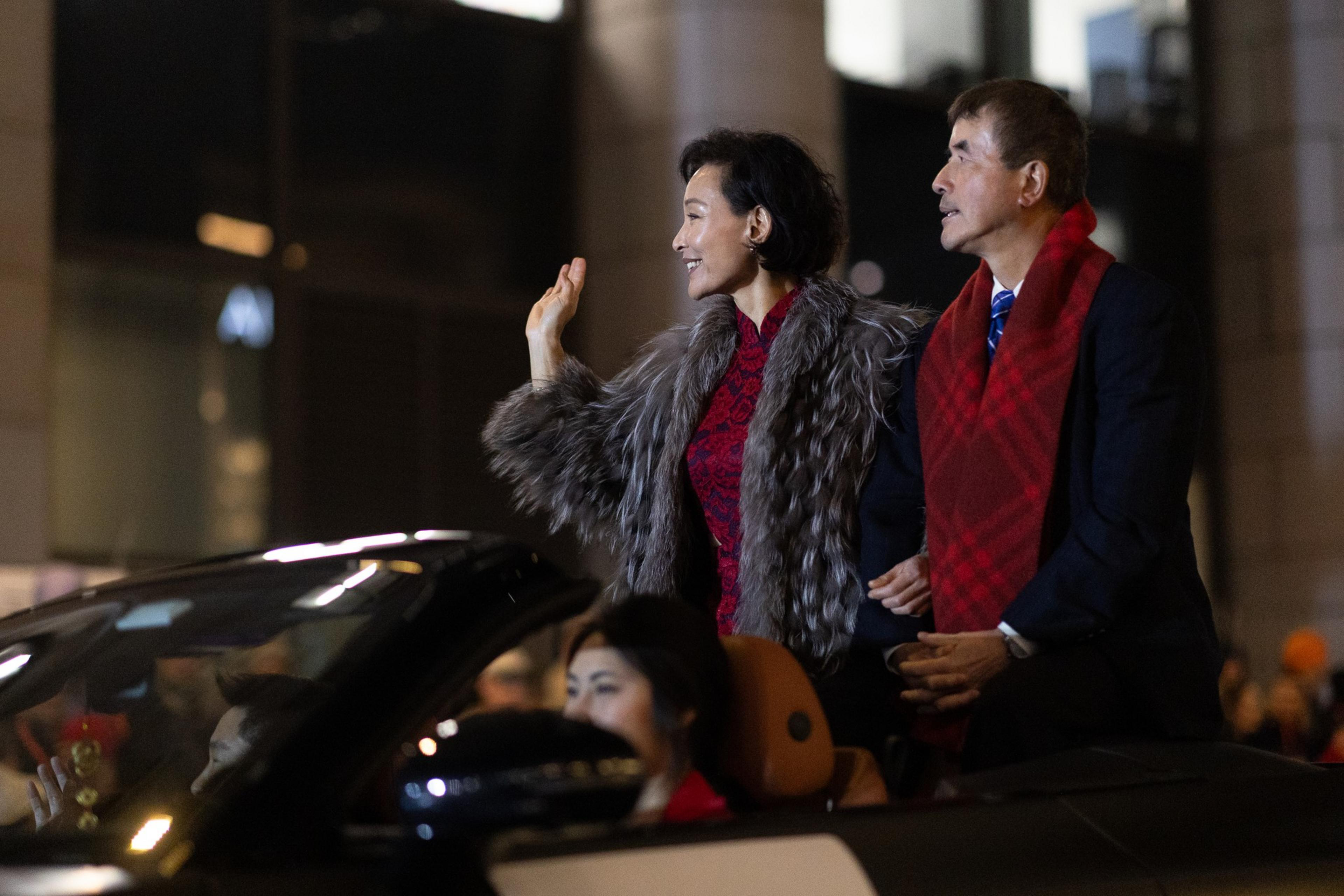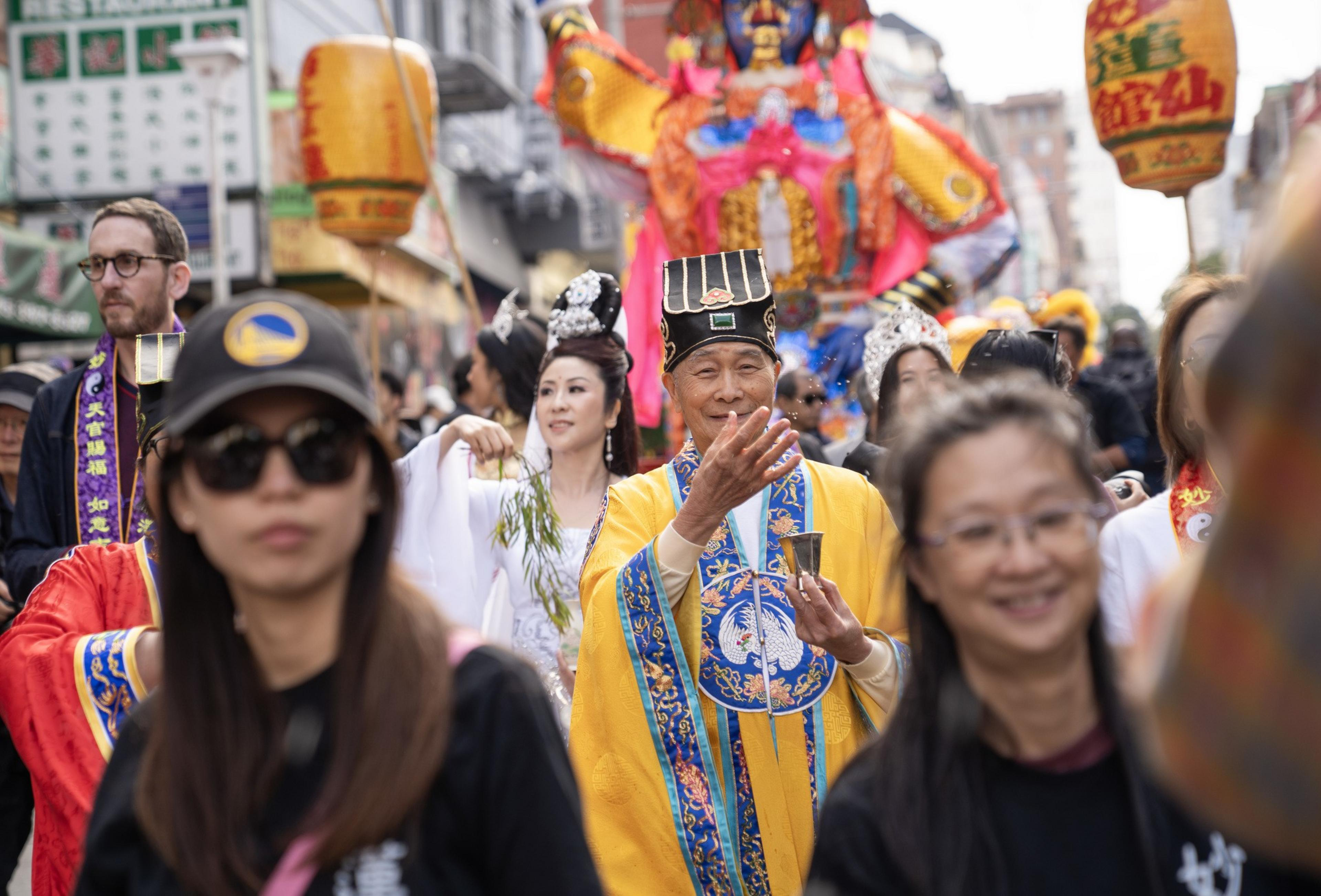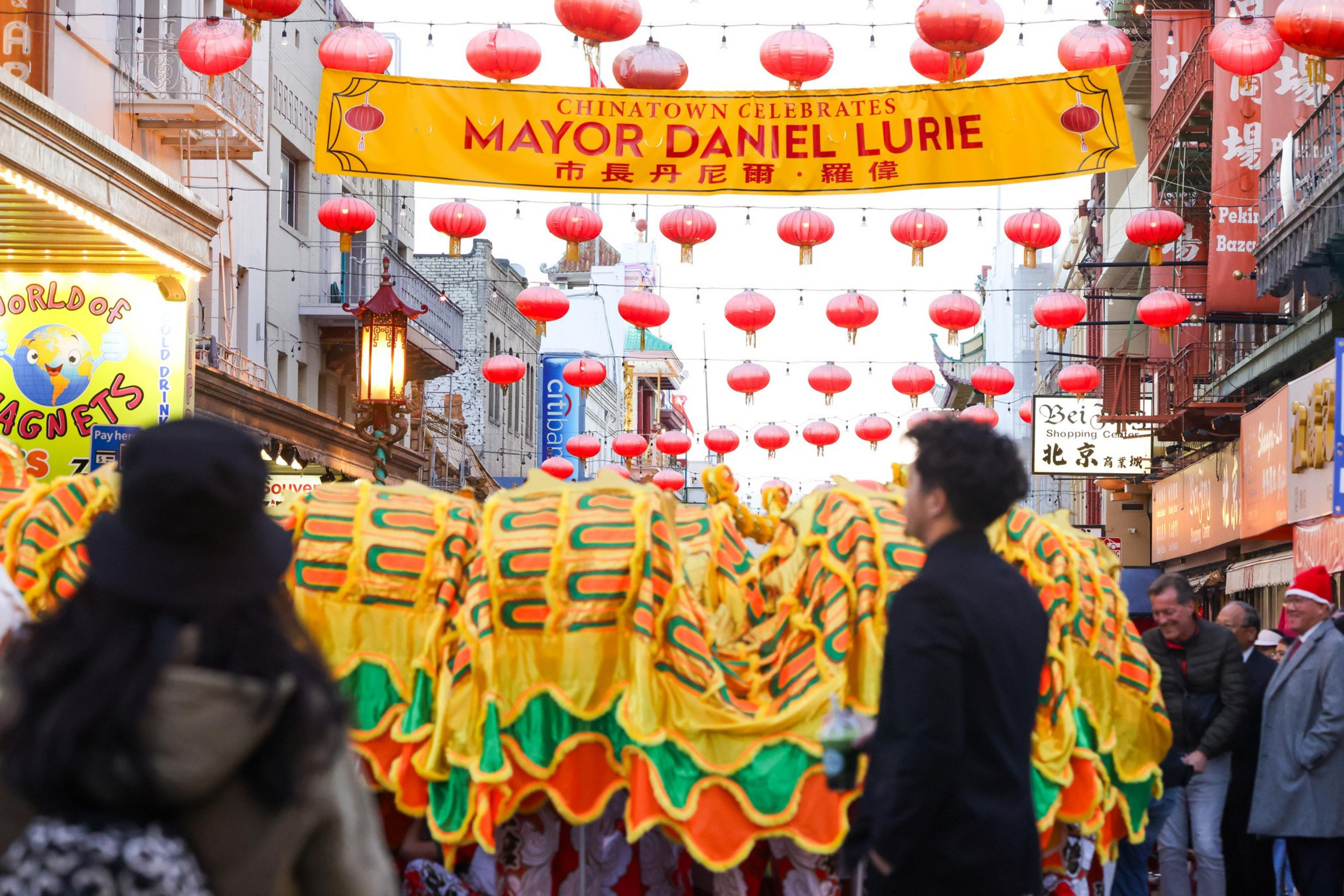On a recent weekend, 71-year-old Xin Qing Chen danced joyfully on a Chinatown street, her gestures blending with pulsing disco beats.
“I’m just an old lady,” she said in Chinese before singing folk songs. “But I am so happy today.”
Chen, who lives in the neighborhood, was one of thousands who attended the fourth annual Contemporary Arts Festival on Sept. 13. The half-day event focuses not on history, like many Chinatown events, but on the art and music of today.
Chinatown leaders have worked to turn the neighborhood, once seen mainly as a tourist destination, into a year-round hub of parades, street festivals, and block parties attended by locals and tourists alike. The goal is simple: attract younger crowds, strengthen community pride, and spark an economic comeback.
Is it working?
Year-round parties
Chinatown’s calendar is packed. Mayor Daniel Lurie’s inauguration party kicked off the year in the neighborhood, followed by the Chinese New Year Parade and other Lunar New Year celebrations that drew tens of thousands. Midyear brought the launch of monthly night markets. Other events span nearly every season: Asian American Heritage Month celebrations in May, the Pride Parade, the Hungry Ghost Parade, the Autumn Moon Festival, and a car show.
And that’s not to mention the many smaller events that pop up around the neighborhood, such as the Craving Chinatown food festival and Colors of Unity Festival block party.

This weekend, there’s a Bruce Lee-themed block party. The neighborhood will be the site of the Chinese Culture Center’s 60th anniversary in late October, as well as celebrations for Halloween and Christmas.
“There’s always something happening here,” said Joanne Lee, executive director of Edge on the Square, which was formed during the pandemic to revitalize Chinatown and organizes the Contemporary Arts Festival. “We’re trying to sustain the neighborhood’s economic vitality through events that keep people coming back all year.”
City Attorney David Chiu, who previously represented Chinatown on the Board of Supervisors and the state legislature, said the neighborhood is full of energy, which builds off decades of effort.
During Chiu’s time in the Assembly, he worked with fellow San Francisco representative Phil Ting to send funding to Chinatown during the pandemic and the Stop Asian Hate movement. That support benefited initiatives like the Chinatown Media and Arts Collaborative and Edge on the Square.
“Chinatown has evolved over the years,” Chiu said. “It’s become a destination for fun, music, art, food, and late-night entertainment.”
Bumpy recovery
Despite the visible vibrancy during events, economic recovery remains uneven. Chinatown was hit particularly hard by the pandemic due to widespread fear of the coronavirus, the steep decline in tourism, and the rise of anti-Asian discrimination.
The latest data from the city controller’s office shows that Chinatown’s sales tax revenue for the first two quarters of 2025 increased by about 11% from the same period in 2024. But 2024 sales tax was down 28% (opens in new tab) from pre-pandemic 2019.
Foot traffic has improved but hasn’t returned to pre-pandemic levels. Chinatown is the city’s second-slowest recovering neighborhood in terms of foot traffic, above only Union Square, according to the Chronicle (opens in new tab).

For those in the restaurant industry, the cultural events are definitely helpful.
Nancy Yu Law, who owns a boba and gift shop and is the founder of the Chinatown History and Culture Association, which organizes a cultural festival in May and a car show in September, said the events do help local businesses.
“Of course, more people are better than fewer,” she said in Cantonese. “The impact on my own business has been obvious.”
But some business owners in other industries see them as a mixed blessing.
Ed Siu, president of the Chinatown United Merchants Association and owner of a travel agency, said that while events tend to benefit restaurants, the street closures and parking restrictions hurt other businesses. He added that many attendees are tourists who happen to be in the neighborhood, rather than regular customers intentionally coming for the festivals.
He cited a Chinese saying: “旺丁不旺财,” which translates roughly to “Many people, but little profit.”

Some events, he believes, should scale back to minimize street closures.
“I don’t mind them holding events, but sometimes those events feel pretty empty,” Siu said. “Some of these cultural festivals are just entertaining themselves.”
Vacancy data offers a slightly better outlook. According to the city’s Office of Economic and Workforce Development, Chinatown had about 935 storefronts before the pandemic, with a vacancy rate of 12.2%. Vacancies peaked at 19.3% in 2021 and had improved to 15.8% by December 2024. A 10% rate is generally considered healthy.
The office said it has supported recovery by offering grants to fill vacant storefronts, launching marketing campaigns, and sponsoring cultural events to draw visitors to local businesses.
What’s next?
“As Chinatown goes, so goes San Francisco — and that’s more true today than ever before,” Lurie told the crowd at the Contemporary Arts Festival. “Our arts, our culture, our creative class — it’s what unites us. It’s what brings people together.”

Danny Sauter, the newly elected supervisor representing Chinatown, said he finds himself at neighborhood events nearly every weekend. “It’s unquestionably a good thing,” Sauter said.
But he emphasized that festivals alone are a short-term boost. For long-term recovery, he aims to strengthen ties between Chinatown and Union Square, North Beach, and other nearby neighborhoods.
“Chinatown and downtown are interdependent,” agreed Malcolm Yeung, executive director of the Chinatown Community Development Center. “Chinatown can actually serve as a gateway to downtown.”
He noted that the neighborhood needs more incentives to attract tourists and visitors during the off-peak season and suggested studying how New York City’s Chinatown has collaborated with downtown there as part of a larger ecosystem, to see what lessons could be applied to San Francisco.
Lee of Edge on the Square stressed that Chinatown’s festivals highlight local roots. Most of the events are organized by community nonprofits or merchants associations — unlike citywide festivals that may draw huge crowds but lack local leadership.
Those neighborhood ties, she added, are what will make the events sustainable in the long run. “These festivals are locally grown, locally produced, and they truly reflect the history and culture of this community,” Lee said.
Rosita Young, who runs a jewelry store on Grant Avenue, is another small business owner who questions the economic benefits of the festivals. Street closures cut into her daily sales, she says, and even on normal days, business remains slow. At one night market, she was offered a booth for free, but selling inexpensive jewelry earned her only about $100.
Still, she sees the appeal.
“If it weren’t for these street fairs, Chinatown would be completely dead,” Young said in Mandarin. “At least now it’s lively again — and little by little, people will come back.”
